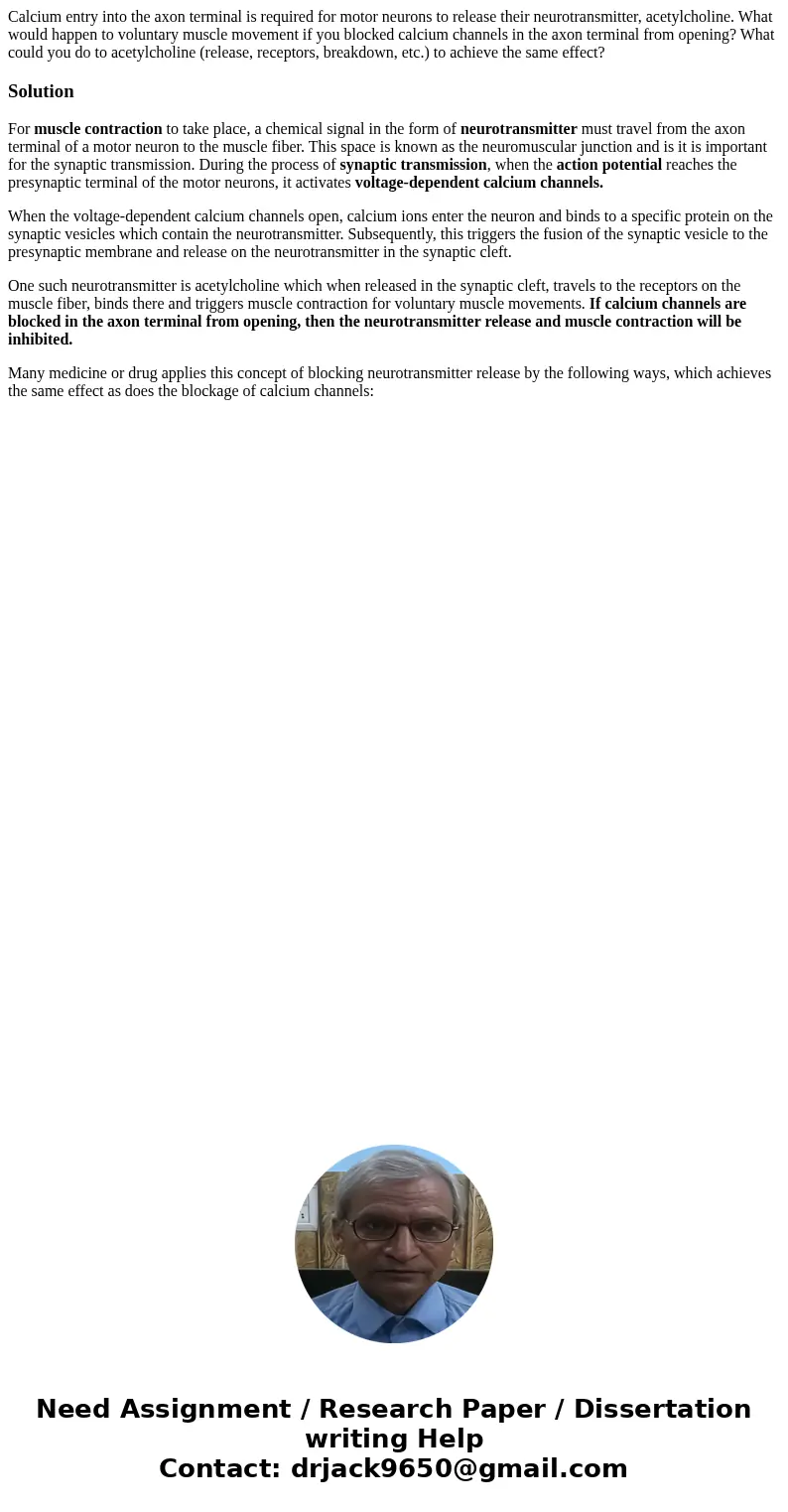Calcium entry into the axon terminal is required for motor n
Calcium entry into the axon terminal is required for motor neurons to release their neurotransmitter, acetylcholine. What would happen to voluntary muscle movement if you blocked calcium channels in the axon terminal from opening? What could you do to acetylcholine (release, receptors, breakdown, etc.) to achieve the same effect?
Solution
For muscle contraction to take place, a chemical signal in the form of neurotransmitter must travel from the axon terminal of a motor neuron to the muscle fiber. This space is known as the neuromuscular junction and is it is important for the synaptic transmission. During the process of synaptic transmission, when the action potential reaches the presynaptic terminal of the motor neurons, it activates voltage-dependent calcium channels.
When the voltage-dependent calcium channels open, calcium ions enter the neuron and binds to a specific protein on the synaptic vesicles which contain the neurotransmitter. Subsequently, this triggers the fusion of the synaptic vesicle to the presynaptic membrane and release on the neurotransmitter in the synaptic cleft.
One such neurotransmitter is acetylcholine which when released in the synaptic cleft, travels to the receptors on the muscle fiber, binds there and triggers muscle contraction for voluntary muscle movements. If calcium channels are blocked in the axon terminal from opening, then the neurotransmitter release and muscle contraction will be inhibited.
Many medicine or drug applies this concept of blocking neurotransmitter release by the following ways, which achieves the same effect as does the blockage of calcium channels:

 Homework Sourse
Homework Sourse